Jump to:
Are you considering growing plants in a greenhouse? It’s an exciting endeavour, but it comes with its fair share of considerations. One of the first things to think about is which plants are best suited for cultivation.
The problem is that many people find themselves at a loss when it comes to selecting the right plants to grow. Don’t worry, though—we’re here to help! In this guide, we’ll introduce you to the ideal plant choices.
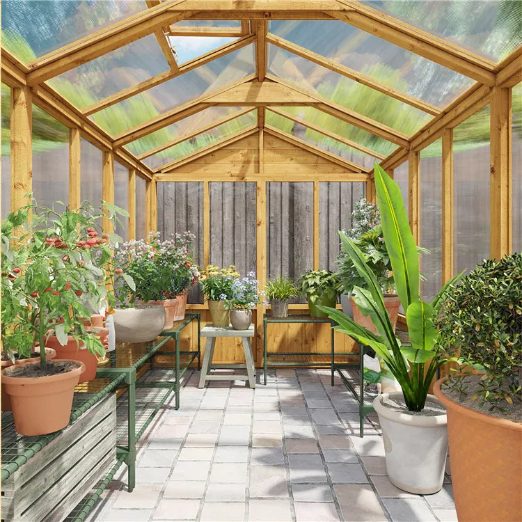
Growing Plants Within a Greenhouse
Every gardener aspires to cultivate healthier, high-quality plants. A greenhouse plays a pivotal role in achieving this goal. By providing the right conditions for cultivation, a greenhouse fosters plant growth.
Optimising plant growth in a greenhouse requires creating the ideal environment. This includes maintaining a steady ambient temperature. And this applies to any type, whether it’s timber greenhouse, polycarbonate greenhouse, or metal greenhouse.
Our list of five best plants to grow in a greenhouse is divided into four categories:
- Vegetables
- Fruits
- Herbs
- Ornamentals
These plant varieties have demonstrated remarkable adaptability within greenhouses. They make an excellent choice for beginners.
5 Best Vegetables to Grow
Vegetables are divided into two groups: cool-season crops and warm-season crops. Let’s start off with the cool season crops. Common cool-season vegetables like:
- Lettuce
- Broccoli
- Peas
- Carrots
- Spinach
All are great choices for upright cold frame and unheated greenhouse growing.
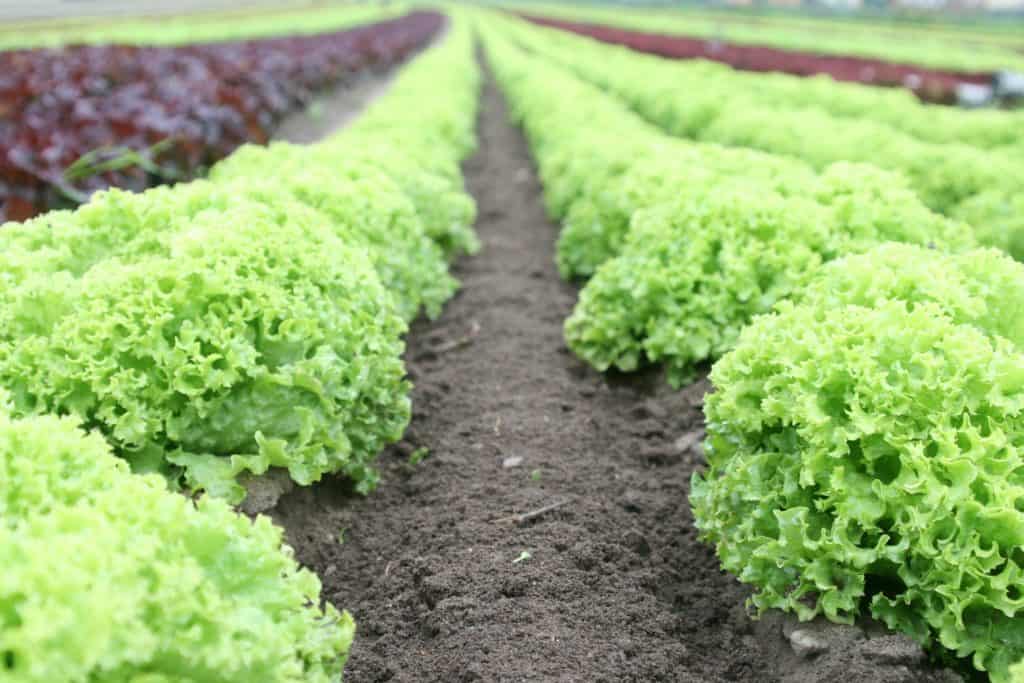
Lettuce
Lettuce is an excellent choice for greenhouse cultivation. It offers a cost-effective means of enjoying fresh salads right from your own table. These healthy greens come in a range of colours, flavours, and textures. They simply allow you to elevate your salad game to new heights!
This cool-season crop thrives in chilly and moist weather conditions. When sowing lettuce seeds, plant them thinly, approx. 13mm (½ inch) deep and 30cm (1ft) apart in rows. The timing of sowing depends on when you desire to harvest your lettuce.
For a summer/autumn harvest, you can sow lettuce between late March and late July. To get an earlier crop, begin by sowing the seeds in early February in seed trays. Then, transplant the seedlings into your greenhouse in early March. Top tip: Provide them with cloche or plastic tunnel protection.
If you’re aiming for an early winter crop, the ideal time for sowing is early August. Meanwhile, September and October are perfect months to sow for a spring harvest.
To ensure a continuous supply of lettuce, consider sowing a short row every two weeks. This practice guarantees a steady rotation of crops. Most importantly, a consistent harvest throughout the season.
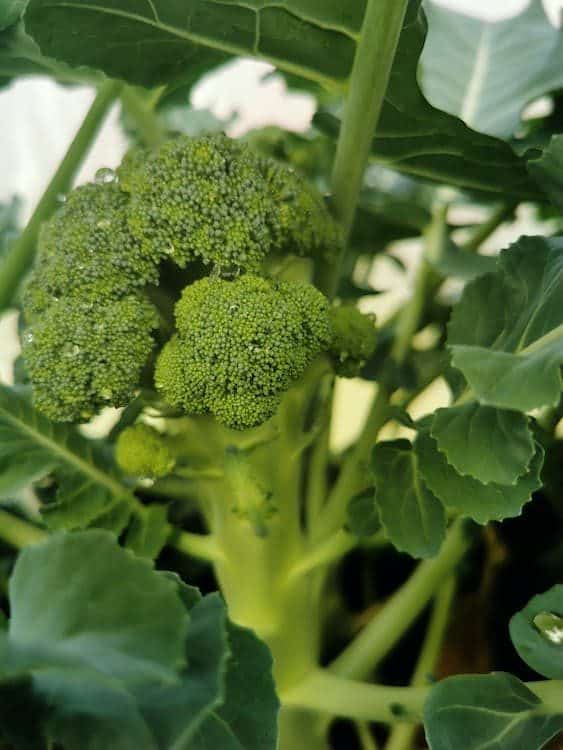
Broccoli
Broccoli can be used in numbers of ways. And despite my behaviour when I was eight – throwing it on the floor isn’t one of them! It can be eaten fresh, used in soup and pasta, and sautéed. This nutrient-rich vegetable is easy to grow as well.
If you want to harvest broccoli in midsummer, it’s best to start indoors 6-8 weeks before the last frost date. Sow seeds 6-13mm (¼-½ inch) deep in a seed-starting mix or peat pellets.
As a rule of thumb, when the ambient temperature is between 45°F-85°F (7°C-29°C), broccoli seeds germinate within 4-7 days. For fall cropping, it can be direct-seeded into the greenhouse in midsummer.
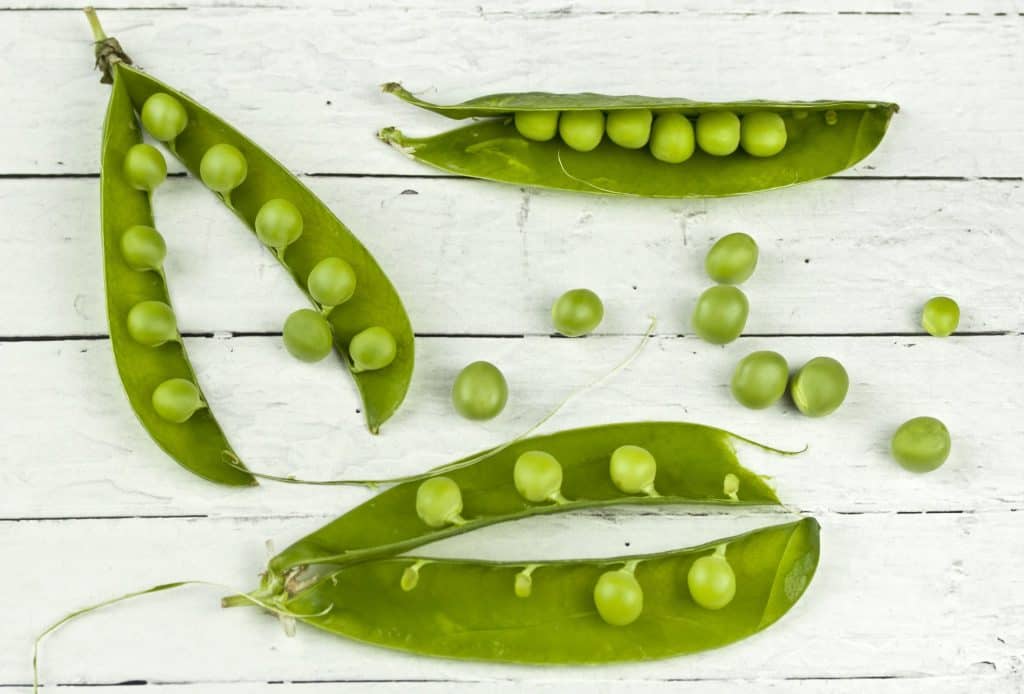
Peas
Growing peas is straightforward as they pretty much watch out for themselves! Not only are they effortless to grow, but they’re also a tasty and nutritious legume. A cool-season legume such as sugar snap peas are best in salads and mixed with other greens.
To start growing them in your greenhouse, sow seeds 1-2 inches deep and 2 inches apart. Then, water the soil carefully with a fine mist until the soil is moist. For climbing, place a 3-foot trellis or plant spiral at the back of the plant. Make sure to do this without damaging the peas.
Lastly, cut off the tips slightly over the leaf node once it reaches 8 inches. This will help stimulate branching and help to prevent them from becoming leggy. This is where seedlings have stretched skinny stems and look fragile.
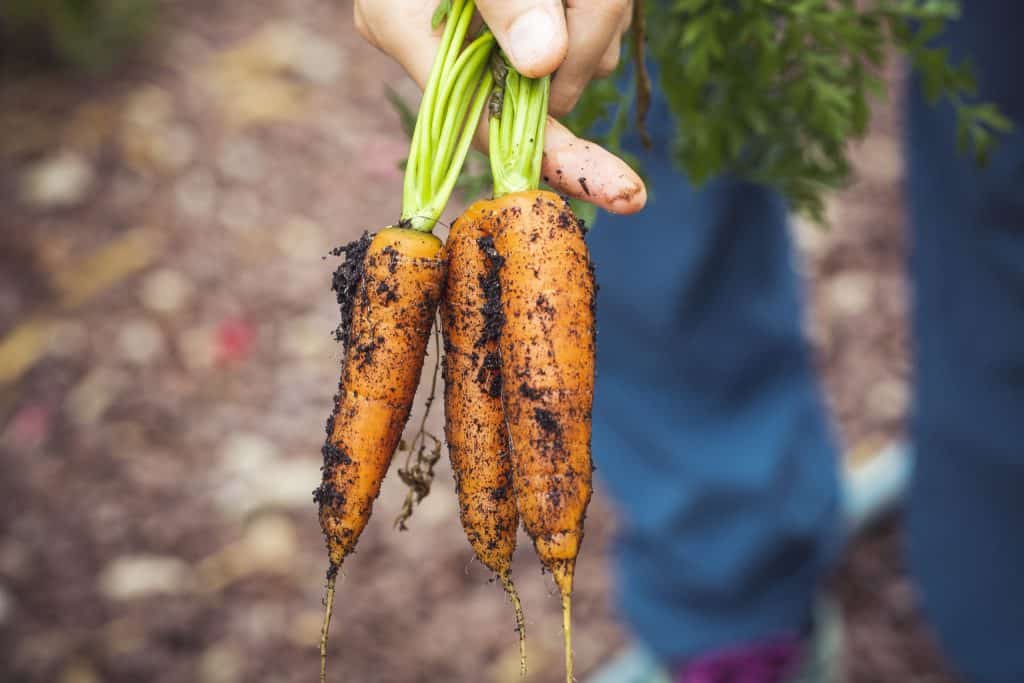
Carrots
Carrots are best grown in cool temperatures like early spring and late fall. This nutritious root vegetable is low in calories, high in sugar, and an excellent source of fibre. If you’re looking for a quick addition to your salad, you can’t go wrong with these orange sticks!
To ensure successful growth, sow carrot seeds thinly with a spacing of about 6 inches apart. You can plant them in a raised bed or directly into the ground inside or outside your greenhouse.
After two to three weeks, germination will begin. During this period, carefully remove weaker seedlings. Make sure to avoid leaving bruises or damaging the leaves and stems. Also, ensure they receive at least one inch of water per week. Once the leaves wither, it’s time to harvest the carrots. (Wait for approximately seven to ten weeks after sowing.)
A helpful tip is to keep the soil moist before harvesting. Then, flatten and water the soil after harvesting to maintain their overall health.
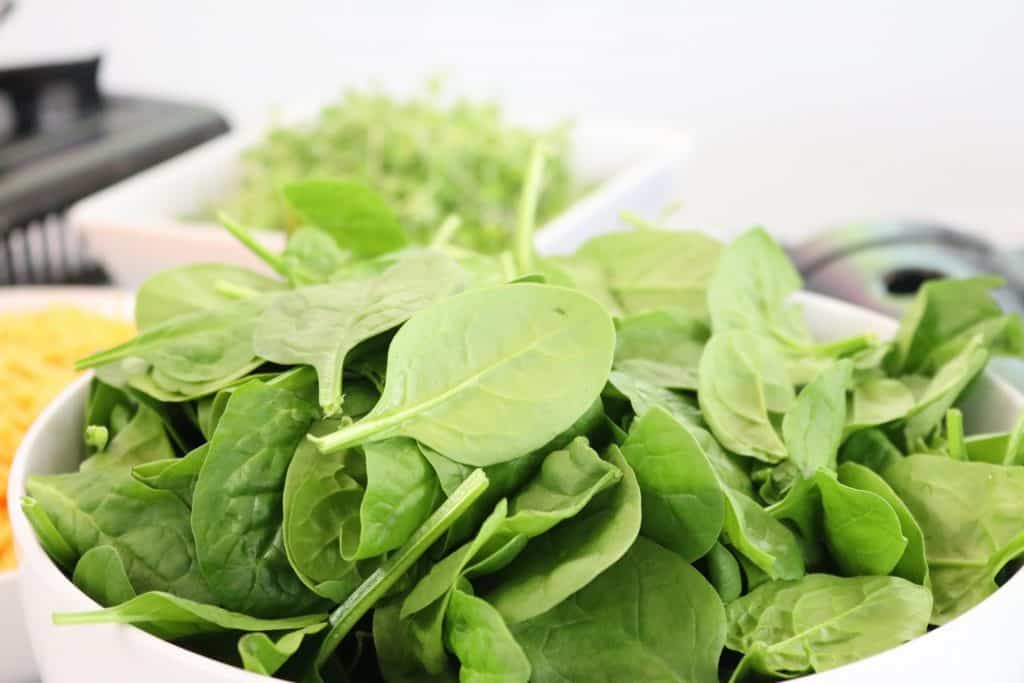
Spinach
Spinach is a great choice of plant for beginners as it doesn’t require constant high temperatures. Its leaves are a great source of vitamins A, B, and C, and they have the highest concentration of iron and calcium among other green leafy vegetables.
Even better, spinach helps to boost your brainpower. This superfood veggie also thrives in the greenhouse and is easy to grow:
- Till the soil a week before planting and add aged manure. Spinach grows well in well-drained nutrient soil.
- Start the seeds directly in your garden or in a nursery and transplant them about three weeks after they sprout.
- Sow in shallow holes between half an inch and one inch deep and cover lightly.
- Sow about 12 seeds per foot. Recommended spacing is 3 inches apart.
- The temperature of the soil should be between 70°F-75°F to achieve an increased germination rate.
- Apply at least two inches of water every week.
These cool-season plants can adapt to chilly nights. Thus, there’s no need for heating when growing them – unless you live in a region with extremely low temperatures. Most of the mentioned plants also grow well in part-shade areas. This can reduce the need for overhead lighting.
To guarantee their full growth, particularly in the odd hot day in the early season, install a ventilation system in your greenhouse. This is to ensure the optimal temperature for the crops.
Warm-season crops
Warm-season vegetables thrive in greenhouses with steady temperatures between 55°F-85°F (12 °C-29 °C). They include:
- Cucumbers
- Peppers
- Squash
- Tomatoes
- Aubergine
Unlike cool-season crops, they will often need supplemental lighting, trellising, and hand pollination. If you treat them nicely, though, they can provide you with year-round summer favourites.
And the fun part is that these vegetables can be harvested in the comfort of your own backyard!
5 Best Fruits to Grow
Strawberries and melons are beloved choices for greenhouse fruit cultivation. But don’t overlook the delightful possibilities of figs, lemons, and oranges.
When selecting which fruits to grow, keep in mind the temperature and size of your greenhouse. Figs and apricots prefer cooler conditions, making them suitable for certain setups. Meanwhile, oranges thrive in a heated environment. These citrusy balls offer an excellent option for a different type of greenhouse.

Strawberries
Ideal for both novice and skilled gardeners, strawberries are easy to cultivate and they do very well in a greenhouse. The most popular choices for greenhouse growing are:
- the Cambridge favourite
- Royal sovereign
- Tamella
- Elvira
You can start sowing them in August or September with good roots in 6 inches pots. During the winter months, keep the potted ones in a cool greenhouse. Around April, they will be ready for picking.
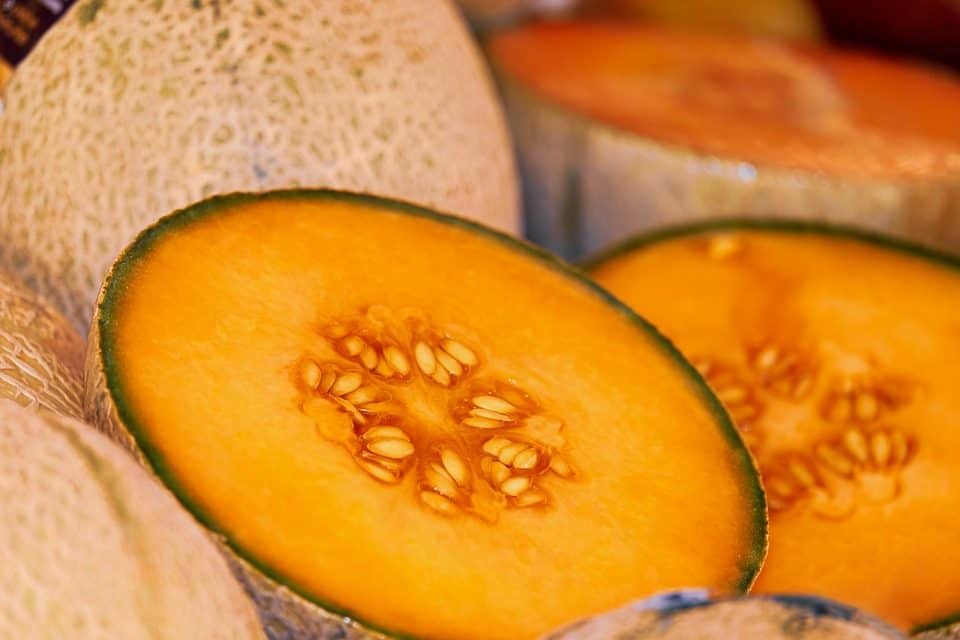
Melons
For successful greenhouse gardening, consider adding melons alongside your cucumbers. Garden greenhouses provide excellent protection against harsh weather conditions, ensuring optimal melon growth. Among the four recommended melon varieties, Sweetheart stands out as the top choice. It offers the best of both worlds: it’s early blooming and has a firm texture.
Charentais is another great option, offering a distinct flavour compared to Sweetheart. Ogen features sweet, pale green flesh but matures slightly later. Meanwhile, Blenheim Orange requires a heated greenhouse for optimal growth.
To get started, sow your melon seeds from mid-April to the end of May. Soaking the seeds in lukewarm water for 24 hours before planting encourages germination. Plant the seeds around 1 inch deep directly into small pots, approx. 3-4 inches in diameter. Water the soil lightly whenever it appears dry, taking care not to overwater the seeds.
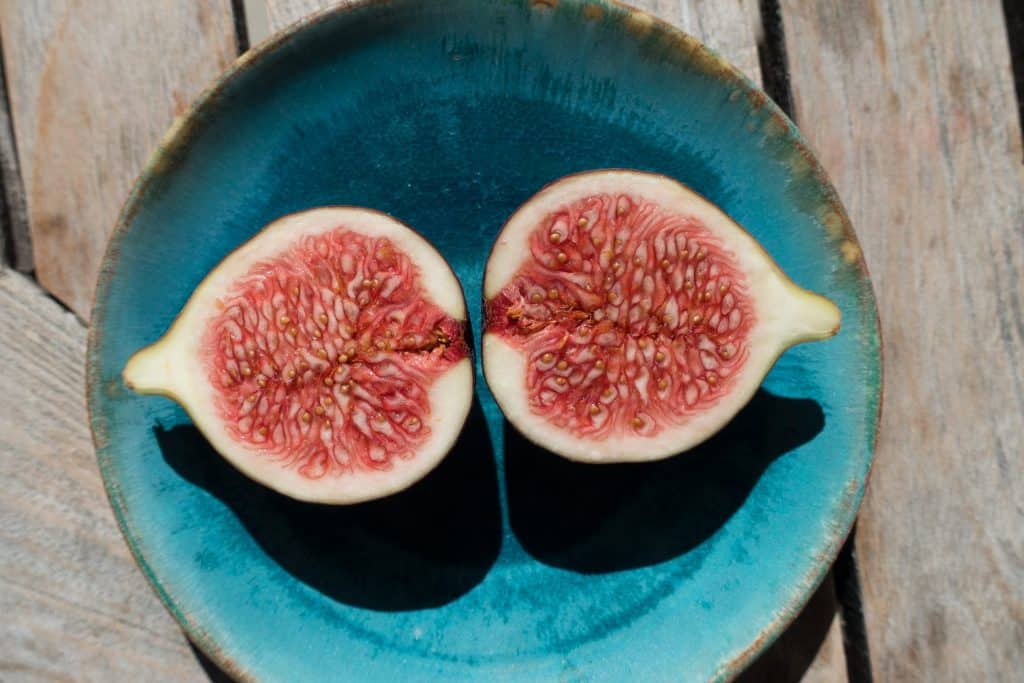
Figs
Growing fig trees can mean two things: a basket of delicious fruit and the perfect summer shade!
Figs thrive full in the sun and make tasty fruits. They also produce broad leaves in spring, providing natural shade for your plants.
One of the amazing things about this tree is that it loses its leaves just in time for fall as well. This means it retreats in time to give your plants more sunlight. What’s more, they’re a dry tolerant fruit and can withstand inadequate ventilation environments.
If you’re planning to grow a fig tree in your greenhouse this year, the best time to do it is in early spring while the sapling is still dormant. Figs also thrive if planted in the summer or fall. When it comes to cold climates, it’s better if a fig sapling is in the ground, rather than a pot.
The best place to plant fig trees is in the middle of raised beds. This is to ensure that there’ll be plenty of space for root growth and optimal shading capability.
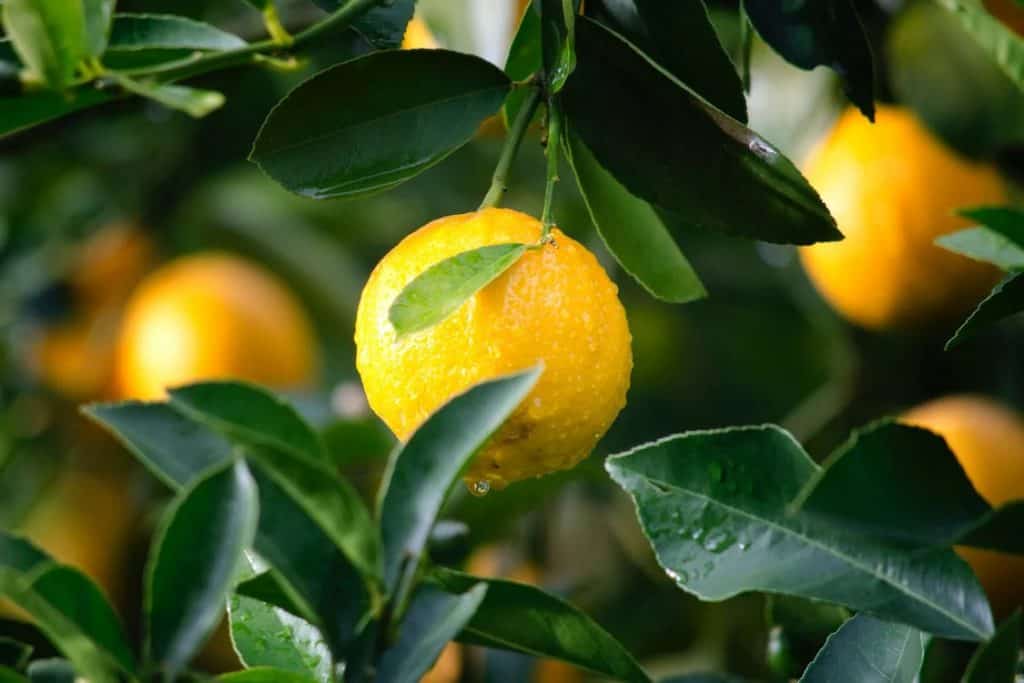
Lemons and oranges
Once you begin harvesting greenhouse-grown lemons and oranges, you’ll never look at the ones in supermarkets the same way again! They’re easy to grow and can fill up your basket with fresh fruit possibilities year-round.
Both belong to the broader category of citrus fruits, and they’re the easiest citrus trees to grow. You can grow orange and lemon trees in terracotta pots in a sheltered, sunny spot. Keep in mind that they do best in high humidity.
In the summertime, water them at least once a week. If possible, use rainwater. But if only tap water is available, let the water stand for 24 hours to let any chlorine evaporate. Water sparingly in winter.
Feed them weekly with liquid seaweed and a citrus fertiliser. When the spring comes, thin out the centre so light and air can get in. Remove any dried branches or any parts that look thin or lack vigour.
5 Best Herbs to Grow
Herbs make an exciting and healthy way to incorporate fresh greens into your food. Not only that but they add natural decor to your home. If you wish to create a year-round herb garden in your greenhouse, it’s best to know which herbs do best in these growing conditions.
Listed below are our top five herbs for greenhouse gardening.

Rosemary
Come on – you’ve heard about this astonishing herb before. Rosemary is a must-have in every culinary spice rack!
This herb is also ornamental, which makes it a lovely decorative plant. Thanks to its aromatic and flavourful leaves, rosemary is one of the tastiest herbs out there. It’s surprisingly easy to grow them in a greenhouse, too! You can either start from seeds or cuttings. Plant them about ten weeks ahead of the last spring frost.
But before planting, soak the seeds for four to six hours. This is to soften the seed coat as well as prime them to sprout.
Rosemary does best in well-drained soils with temperatures ranging from 65°F-75°F. The preferred spacing is 3ft by 3ft. Considering they love light and humidity, growing them in a terracotta pot is a good call.
Pick a sunny location to provide them with enough sunlight. The herbs should also be watered using the deep watering method. To keep humidity high around the plant, spritz regularly with a spray bottle of water.
Top tip: Trim them after the first flowering to encourage the herb to grow bushier.
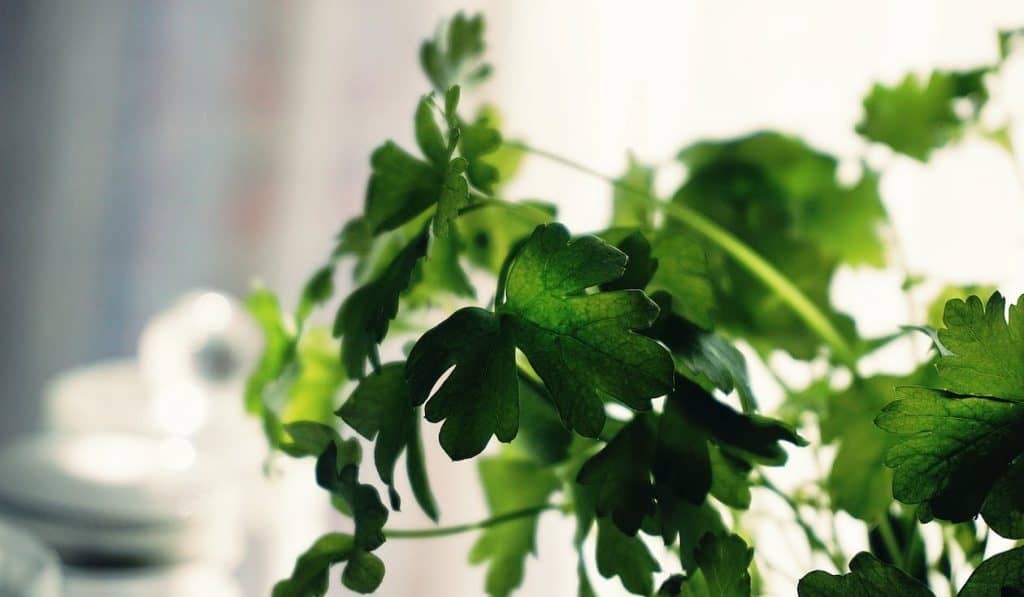
Parsley
Parsley is loved by gardeners and chefs the world over. For one, this classic aromatic herb is low-maintenance and easy to grow in any garden, including in greenhouses.
Parsley is also rich in Vitamins A and C and Iron. This flowering herb has been widely accepted as a traditional remedy for absorption, getting rid of urinary tract infections, or even used for freshening breath. (Not with the same plant though!).
Additionally, this herb is a common ingredient in East European and Mediterranean cuisines. It can also be mixed with dill, basil, mint and other herbs when preparing pestos.
When planting parsley in your greenhouse, take note of the following:
- You can plant parsley in containers, hanging pots, raised beds, or directly into the ground
- Recommended spacing is 6-8 inches between the seeds
- Well-composted manure is ideal. This is to enrich the soil before planting the herb
- Soak the seeds a day before planting, preferably in warm water overnight
- Remove any seeds that float. Place the rest onto a paper towel or cloth to dry, and plant immediately
- The optimal temperature should be between 65°F-75°F
- Fresh parsley must be thinned out or transplanted when it reaches two to three inches high
Parsley also loves sunlight. Other than your greenhouse, you can grow them in a sunny kitchen window.

Coriander
Also known as cilantro, coriander is a vibrant green herb that enhances the flavours of:
- South American
- Arabic
- Asian dishes
To grow this herb in your lean-to greenhouse, prepare a patch of soil or use hanging pots or raised beds on slab bases. Add well-composted manure into the soil and sow the seeds approximately a quarter of an inch deep. Space the seeds 6 inches apart in rows about a foot apart.

Thyme
Thyme is a beautiful herb with lovely leaves and flowers. It also comes in different varieties like golden-scented, garden, and ground-cover thyme. All can be used as culinary or medicinal herbs.
The herb’s little flowers attract beneficial insects as well, including native pollinators like honey bees and wasps. Plus, you can plant them with cabbage, aubergine, potatoes, and strawberries.
It’s thought that thyme can help repel cabbageworm, flea beetles, and tomato hornworms. This makes the herb an excellent plant companion.
To start thyme from seeds, plant them in little containers roughly two inches apart. Then spread a light coating of potting fertiliser.
Transplant the young seedlings into their final locations. The ideal spacing is 12 inches apart and in full sunlight. Considering that thyme grows slowly during its early stages, it’s best to mulch with straw to help suppress weeds.
This herb needs to be watered regularly. But be sure to allow the soil to dry first before doing so. Ideally, water them about two inches every week.
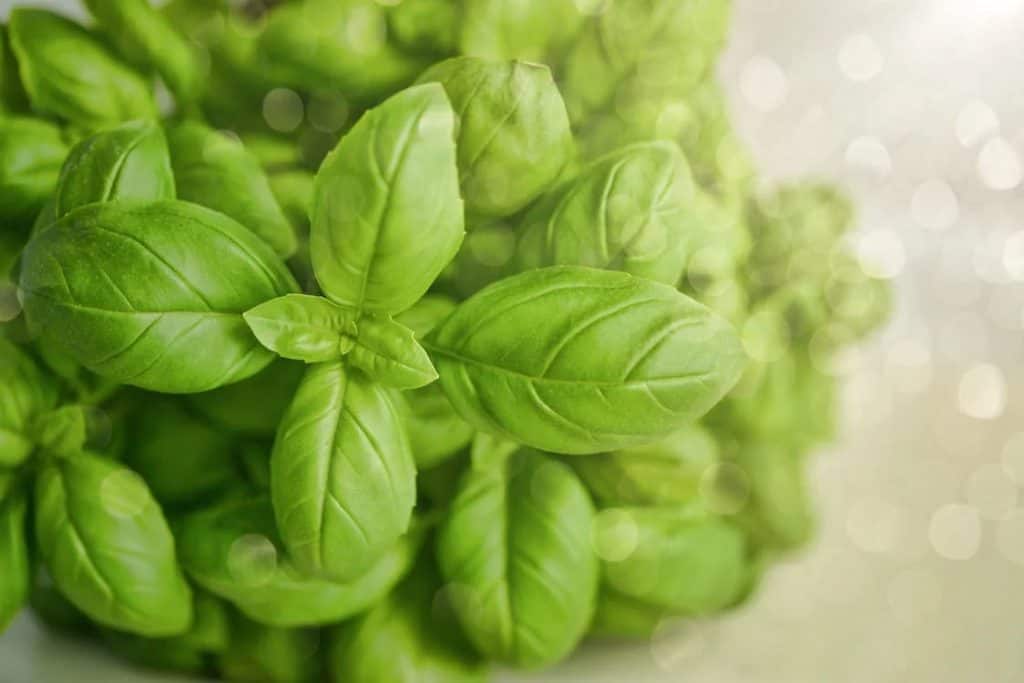
Basil
Packed with Vitamins K and A, basil is a nutritious and delicious herb. It’s rich in minerals too, including manganese, calcium, copper, and magnesium.
In addition to being jam-packed with vitamins and minerals, this herb also has medicinal properties. It’s an anti-inflammatory and an effective pain reliever.
Sounds like a great reason to grow some! With steady temperature regulation, light, and moisture, you can start growing basil in your greenhouse. It grows well in rich aerated soil. The seedlings are then expected to appear within two weeks.
When this warm-weather herb has more than five ‘true’ leaves, transplant it to its final growing area. They should be planted 4 inches apart to develop properly.
Make sure to water them regularly to avoid untimely blossoming. But avoid over-watering, as the plant will become more susceptible to damp.
Top tip: Since basil is quite tolerant to dry conditions, expose it to intense daylight 6-8 hours a day to grow healthy.
5 Best Ornamentals to Grow
Greenhouses offer a controlled environment, perfect for nurturing ornamental blooms. Before diving into your greenhouse flower adventure, consider the needs of these plants. This can include sunlight, temperature, and water requirements. Doing so lets you plan and position your flowers within the controlled structure.
For a successful start, here are our top five recommended ornamental plants:
- Geraniums
- Petunias
- Coleus
- Chrysanthemums
- Pansies
These beautiful flowers will flourish in your greenhouse. With proper cultivation, they can add a touch of charm and colour to your gardening space.
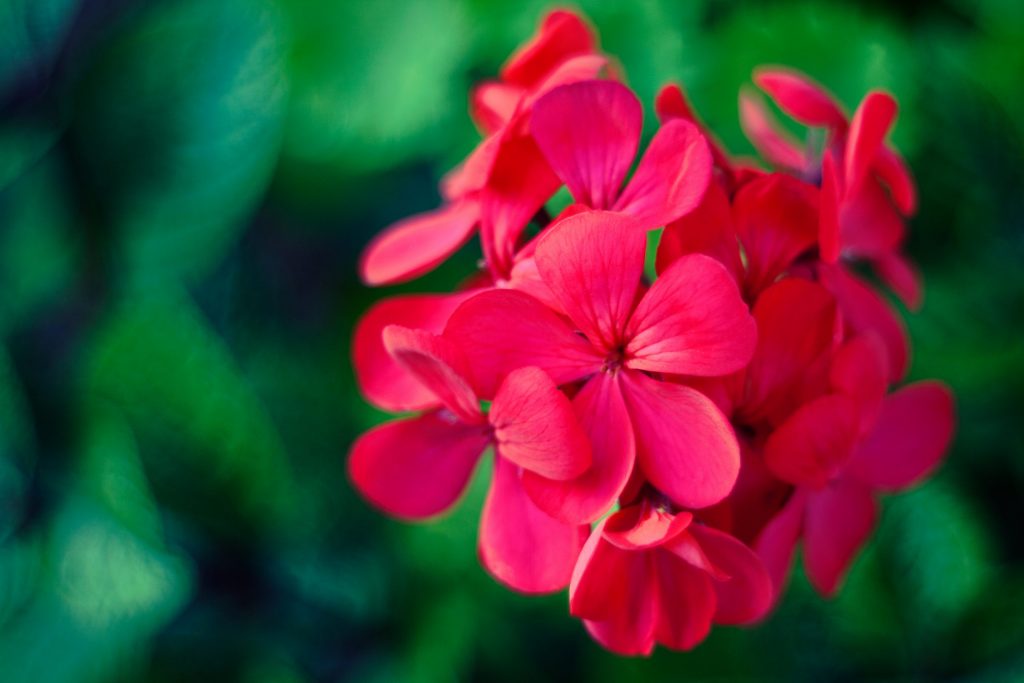
Geraniums
Geraniums are more than just pretty flowers. They offer additional benefits, such as stress reduction and antibacterial properties. This makes them a popular choice for garden bedding.
Many gardeners adorn this native South African plant due to its easy maintenance. Its cheerful flower clusters and decorative leaves are a plus!
Even during gloomy winter days, you can continue to enjoy these jolly blooms in a greenhouse. Here’s a simple guide to doing so:
- Select pots for your geraniums. If reusing old ones, make sure to sterilise them. Make sure to sterilise them to prevent bacterial infection in the new plants.
- Fill the garden pots three-quarters full with amended potting mix. At planting time and every two weeks thereafter, add water-soluble fertilisers.
- Plant a seed in each hole and cover them with displaced soil. A chopstick can be used to create a hole approximately ¼ inch deep into the pot. Water the seeds until the excess water drains through the drainage holes.
Top tip: Lightly misting geraniums every morning with distilled water. These practices will help promote growth and reduce the risk of foliar disease.
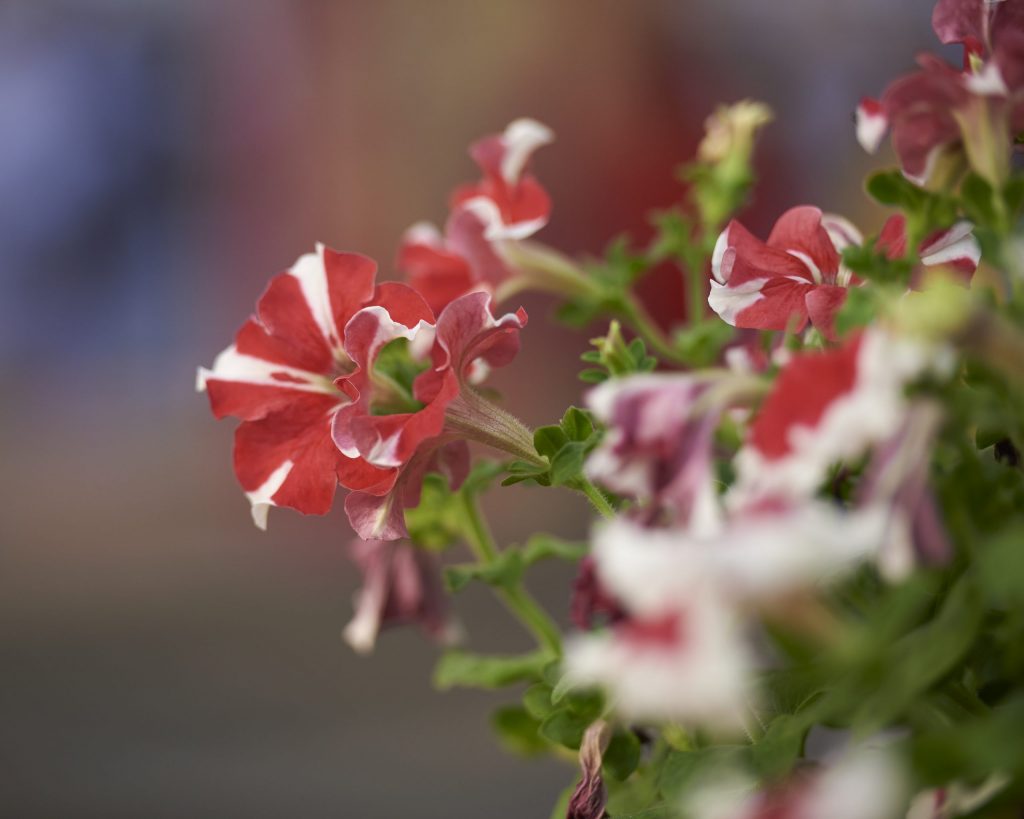
Petunias
If you want to brighten up your greenhouse with lovely pastel colours, growing petunias is your best bet! And there’s a bonus – cultivating them is easy.
Petunias bloom best in full sun. These attractive flowers like fertile soil which drains well and is neutral to slightly acidic (pH 6.0 to 7.0). Spread a 2- or 3-inch layer of organic material to mulch the soil. Organic mulch can suppress weeds, keeping the soil moist. This also improves the texture as it gradually decomposes.
By midsummer, the plants will start to get leggy and spindly. This causes the stems to produce fewer and smaller flowers. What you can do is cut each stem back by half to revitalise the plant.
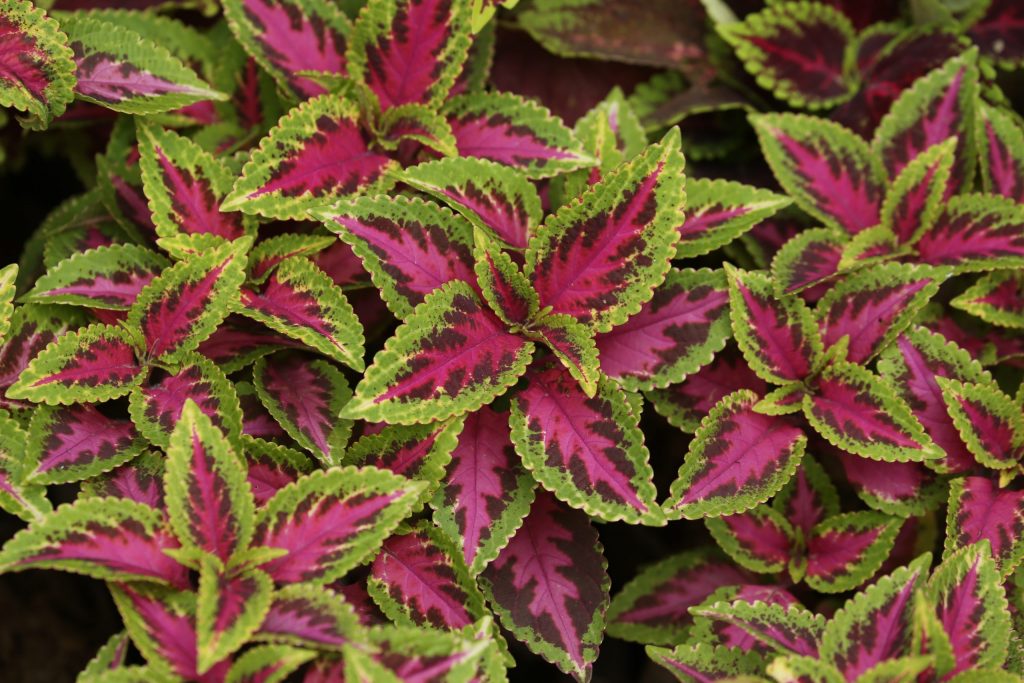
Coleus
When it comes to annuals, foliage can be just as important as the flowers themselves. And Coleus plants stand out as some of the best options for stunning leaf colour.
Feed them with morning sun and partial afternoon shade to achieve the most vibrant hues. Fortunately, many Coleus varieties thrive in both shade and part-sun conditions.
Plant these colourful plants after the threat of frost has passed for optimal growth. Make sure that the soil temperatures have warmed sufficiently. Ensuring that evening temperatures remain above 60°F (15.5°C) is also beneficial. To support their growth, consider feeding the plants with a water-soluble fertiliser. This is particularly important if they are in containers.
By following these guidelines, you can cultivate beautifully coloured Coleus with lush foliage!
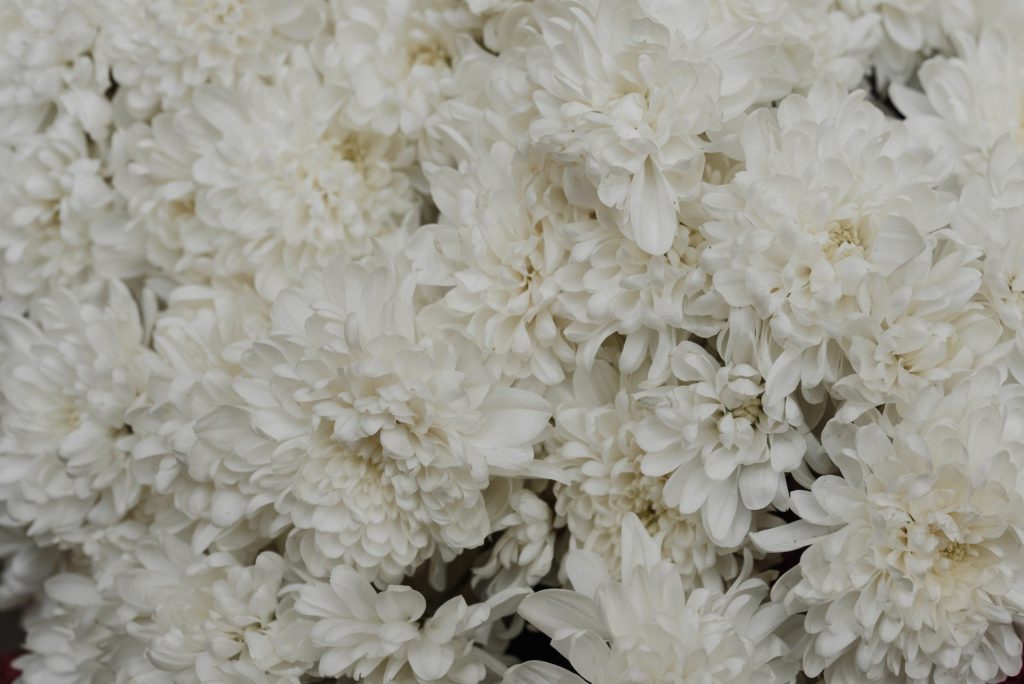
Chrysanthemums
Planning on putting a big show on with some chrysanthemums in your landscape this year? Save your money and put your greenhouse to work!
There are around 150 to 200 different species of this beautiful flowering plant. So it’s important that you have the specific species and colour in mind before planting. Varieties including Paris daisy and Marguerite can thrive in a greenhouse.
But before you introduce chrysanthemums to your greenhouse, clean the structure with a commercial disinfecting product. Sterilisation is a great way to eliminate any fungal and bacteria infections.
Set the greenhouse’s thermostat to 68°F-75°F during the growth period or until the plant begins to bloom. Decrease the day and night temperature to 65°F once the flowers begin to bud.
Water chrysanthemums once or several times a day, depending on the greenhouse temperature to keep soil moist.
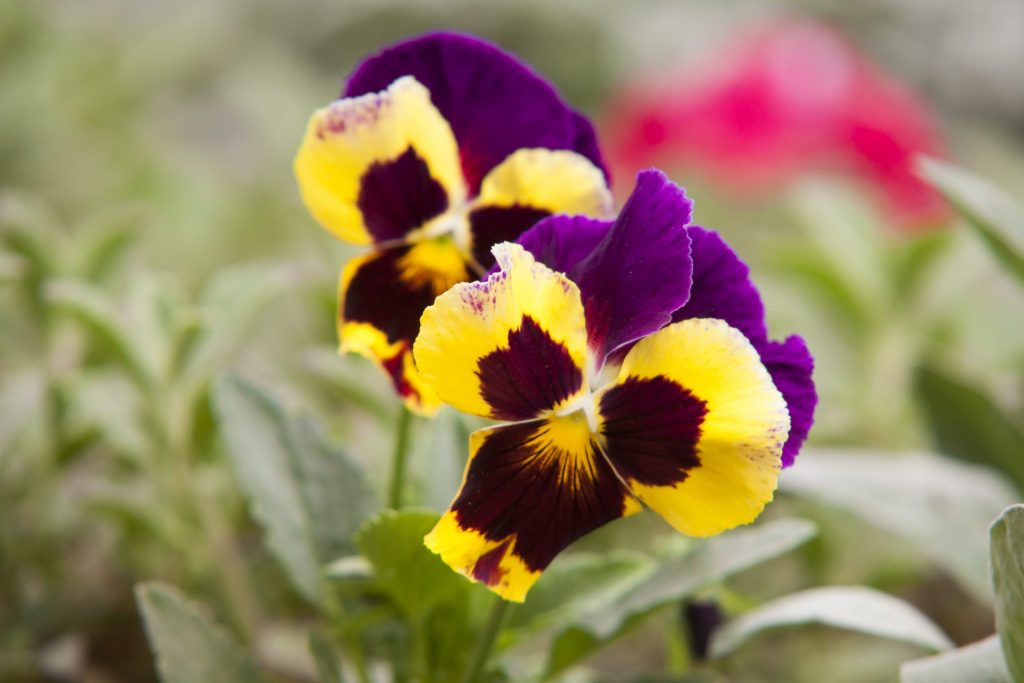
Pansies
Nothing’s fancier than growing pansies in a garden or in a greenhouse! These bright and cheerful flowers can provide life and colour in flower beds where none may have existed.
Originating from the small and delicate variety Johnny-Jump Up flowers, pansies are part of the Viola family. This blooming type of flower boasts a fine and frilly texture in beds.
Today’s hybrid versions are more adaptable to heat compared to those with larger blooms in the past. Their preferred daytime temperature is in the 60°F range while around 40°F in the nighttime.
Pansies can be started from seed or purchased as seedlings. If you plan on growing them, they may be nurtured with spring and winter-blooming bulbs, such as Tulips and Daffodils.
Lastly, bear in mind that pansy plants are biennials. This means that if they’re grown from seed, they may not be able to bloom or flower until the second year. Nevertheless, the waiting period is worth it.
Top tip: Water 1 inch weekly and deadhead any damaged or sickly looking flower pansies for a longer period of blooms.
Essential Greenhouse Care Tips
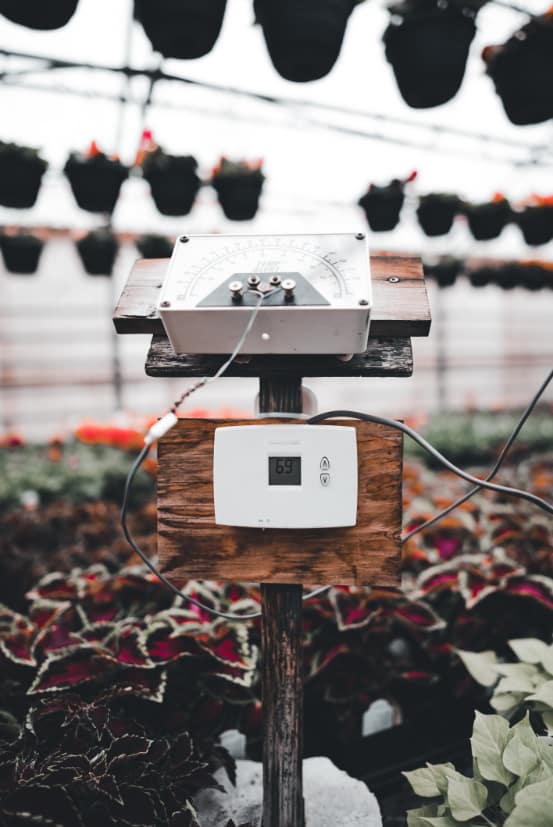
Maintaining a healthy and thriving greenhouse environment is crucial for successful plant growth. Consider these essential care tips to ensure optimal conditions:
Temperature control
Maintaining the right temperature is crucial for different plants in your greenhouse. Imagine each plant has its own preferred temperature for growing happily. To make sure they’re comfortable, get a thermometer and machines that can make it warmer or cooler as needed. Digital ones allow easy monitoring of greenhouse temperatures, ensuring optimation conditions for plants.
When it’s too hot, use shading techniques to give the plants some shade and keep them from getting too much sun. Think of it like creating a perfect, cosy home for each plant, where they have the right temperature. This way, your plants will be happy, grow well, and give you lots of fruits and veggies.
Humidity management
Humidity is like how much moisture is in the air – some plants like it wet, others prefer it dry. Keep an eye on this and adjust it to make your plants comfortable. Think of it as opening windows (ventilation) when it’s too humid to let some fresh air in. If certain plants love lots of moisture, give them a little spray of water (misting) to keep them happy. It’s like making the air in their home just right – not too wet, not too dry – so they can grow strong and healthy.
Soil and watering practices
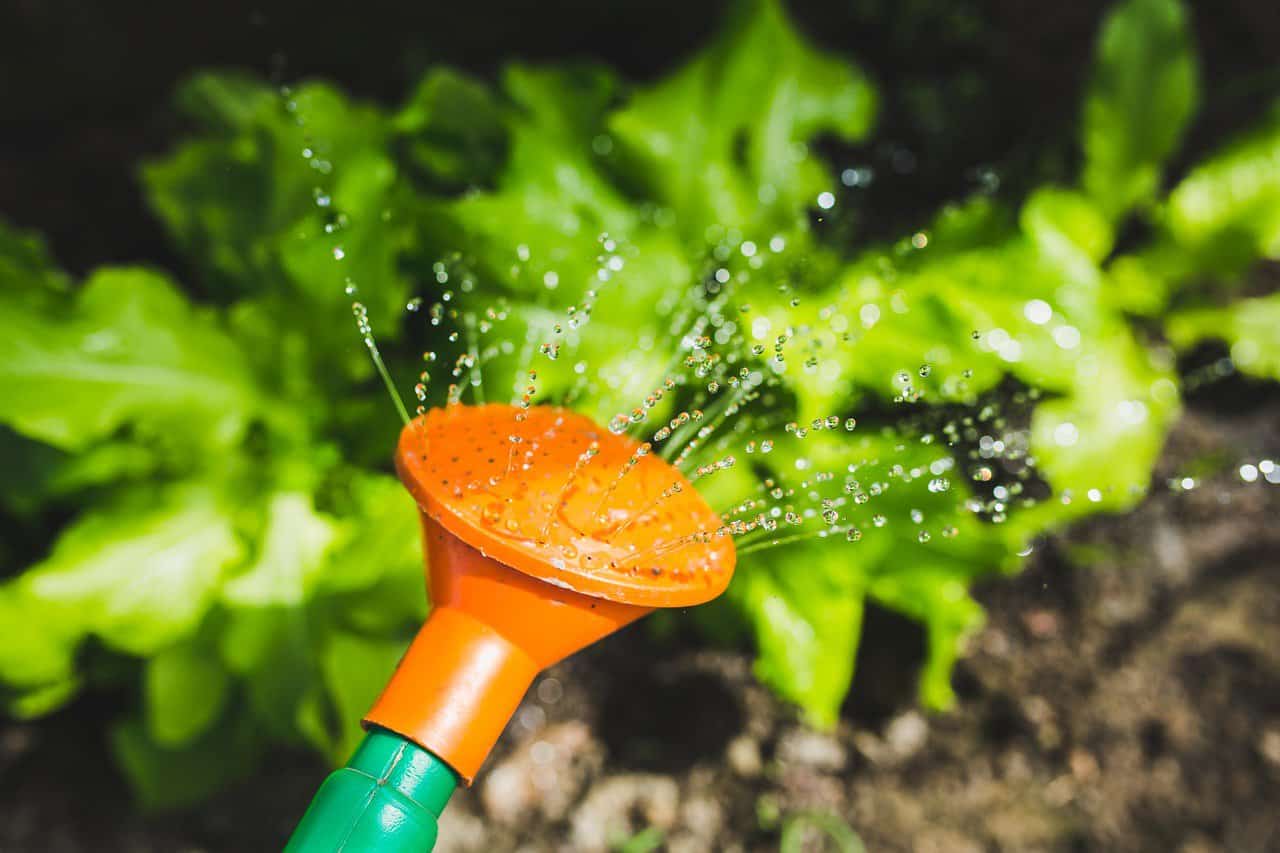
The soil is your plants’ comfy bed, so choose one that lets water through easily. Water them regularly, like giving your pet a drink. Don’t give too much or too little, and find the right balance. It’s like knowing when your pet is thirsty. For an even easier way to water, use a drip system. It’s a small, efficient watering helper that gives each plant just enough water. Taking care of the soil and watering, make sure your plants always get a sip of water when they need it.
Pest and Disease Management in Greenhouses
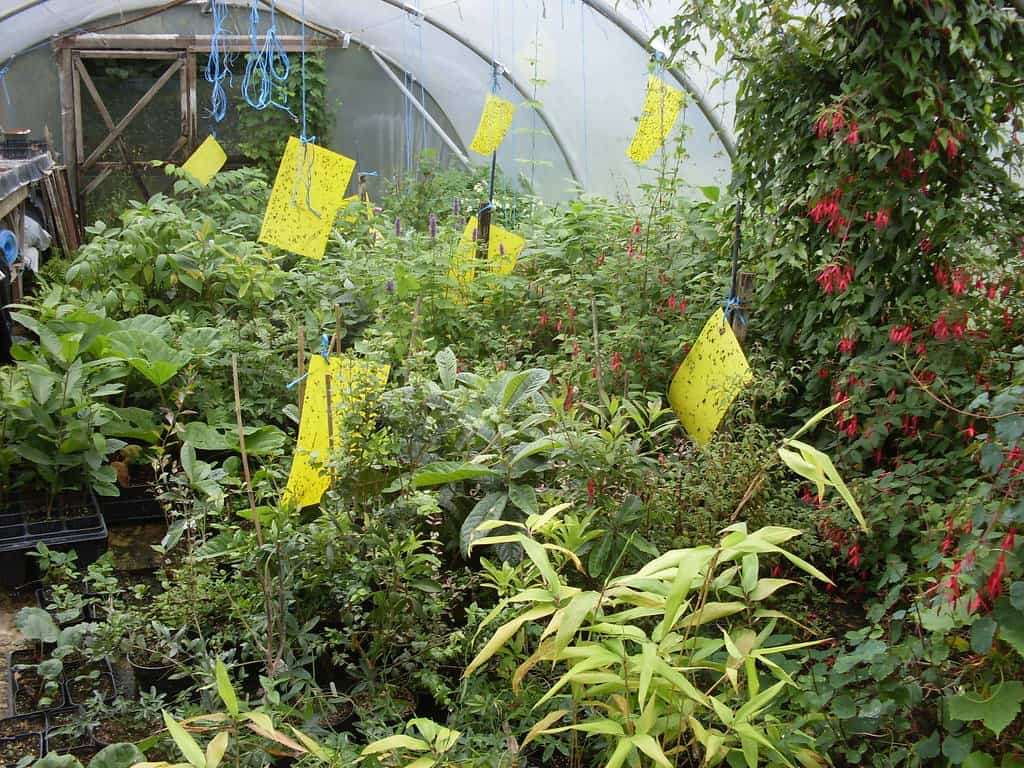
Protecting your plants from pests and diseases is essential for a bountiful harvest. Learn effective strategies to keep your plants healthy:
Pest identification
Knowing your enemies is crucial in keeping your greenhouse healthy. Learn about common pests that might harm your plants. Regularly check your plants for any signs of these unwanted visitors. We recommend considering Integrated Pest Management (IPM) techniques. This involves using various strategies to control pests without relying solely on chemicals.
By understanding pests, keeping a close eye on your plants. Smart pest management also lets you create a strong defense for your greenhouse.
Disease prevention
Crop rotation is effective for minimising the risk of plant diseases. This method means planting different crops in various spots. Take, for instance, growing tomatoes in the same area every year. What you can do is to switch to planting lettuce or beans in that spot. This helps prevent disease buildup.
Keep your greenhouse tidy to keep the ‘invisible’ invaders at bay. These could be powdery mildew, tomato blight, rose blackspot, and apple scab.
Implementing these measures establishes a protective barrier for your plants. This guarantees their joyful growth while warding off the risk of diseases.
Organic pest control methods
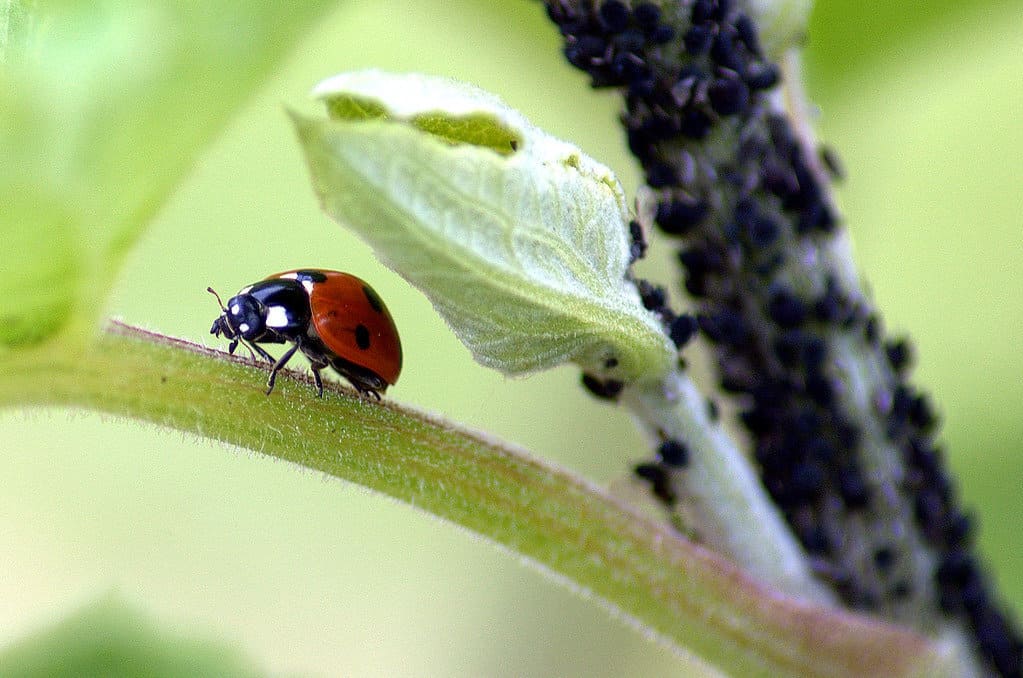
Organic pest control methods provide effective alternatives to chemicals. Simply put, they promote a healthy and balanced greenhouse ecosystem. Neem oil, derived from the neem tree, acts as a natural pesticide. It disrupting insect growth and repelling pests. Diatomaceous earth, a powder made from fossilized algae, acts as a mechanical pesticide. It dehydrates and eliminates pests upon contact. Companion planting involves strategically placing plants that repel pests or attract beneficial insects.
Encouraging beneficial insects acts as a natural defense. Ladybugs, for one, target aphids, while predatory mites control harmful mite species.
Overall, creating a bug-resistant environment cuts down on chemical use. This helps plants grow well in a sustainable way.
Round-up
Starting a greenhouse garden opens up a world of possibilities. It allows you to explore a wide array of plants and their cultivation techniques. And the choices of what to grow are virtually limitless.
To get started, we recommend starting with the five plants outlined in each category. These carefully selected varieties will serve as excellent starting points. Each will guide you towards a deeper understanding of greenhouse gardening.
A greenhouse is an indispensable asset for your gardening endeavours. But it’s worth considering the addition of a potting shed as a valuable companion.
If you’re considering starting to explore greenhouse gardening, read our guide to choosing a greenhouse so you can make the right choice on which one meets your needs.
Shop Greenhouses









